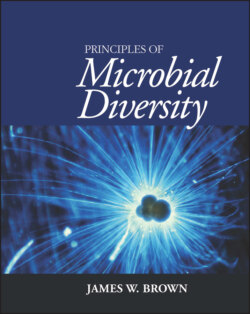Читать книгу Principles of Microbial Diversity - James W. Brown - Страница 76
Long-branch attraction
ОглавлениеOne of the things substitution models fight is a treeing artifact called long-branch attraction. Long-branch attraction is the result (primarily) of an underestimation of the evolutionary distance of distantly related sequences. This underestimation results in a tendency for the longest branches in a tree to artificially cluster together; this also results in the artificial clustering of short branches. Figure 5.4 shows a very simple demonstration of how long-branch attraction can result in incorrect trees.
Long-branch attraction happens because of the difference in evolutionary rates in the branches. Therefore, it is always worth worrying about the details of trees containing branches with very different evolutionary rates, i.e., those with branches of very different lengths.
Figure 5.4 Generation of a “long-branch attraction” artifact in a phylogenetic tree. If the sub-tree to the left is the representation of how these sequences are actually related, imagine what would happen in a neighbor-joining analysis. Sequences A and B are more alike (i.e., they have a smaller evolutionary distance between them) than either is to C, and so they will be erroneously joined, as shown on the right. doi:10.1128/9781555818517.ch5.f5.4
One of the primary causes of strikingly long branches, by the way, is bad sequence or poor alignment. If the primary sequence data are poor, every mistake in the data will be counted as an evolutionary change by the treeing algorithm. Likewise, poor alignment causes most of the bases in the poorly aligned region to be counted as evolutionary changes, lengthening the branch leading to that sequence. Again, beware of trees with unexpectedly long branches! Poor alignment or bad sequence data, resulting in long branches, can combine with long-branch attraction to make trees meaningless.
